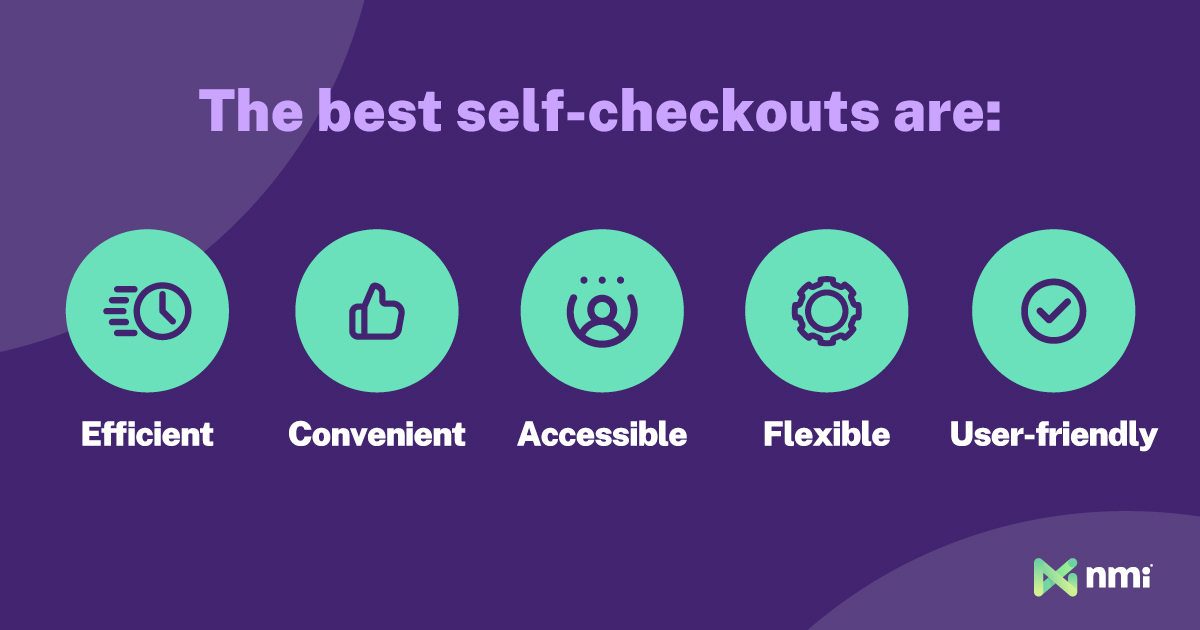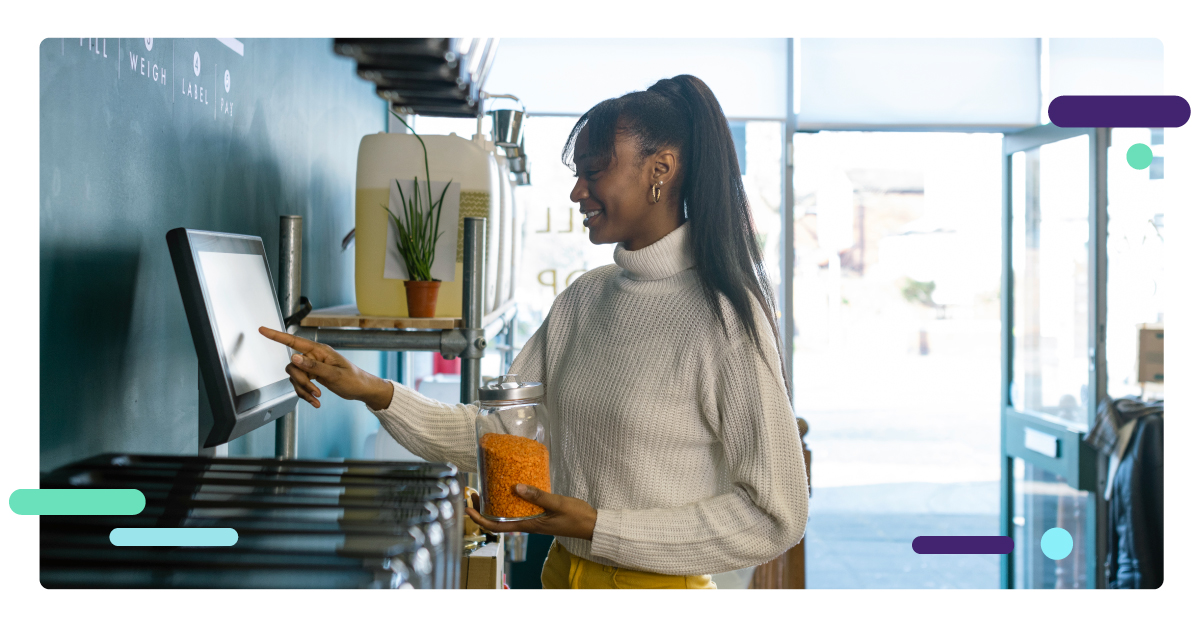“Should cashiers be humans or machines?” This is the headline of a 2017 BBC article examining the then-emerging self-checkout shopping experience. In 2024 BBC wrote another article with the headline, “‘It hasn’t delivered’: The spectacular failure of self-checkout technology.” That headline mirrors many others like it. The Atlantic proclaimed, “Self-Checkout Is a Failed Experiment (Please, not another ‘unexpected item in the bagging area’).”
Self-checkouts are everywhere. While some news outlets proclaim it has failed, self-checkout adoption is rapidly growing. So, what’s the truth?
Some merchants are rethinking using self-checkouts. There are a few reasons for this, including frustration from older consumers, system errors, installation costs and theft. But, while these systems have their downfalls, consumers are still demanding this option. In a digital world where speed and convenience are valued, that demand will likely increase.
So, what’s a retailer to do?
In this article, we’ll examine the current state of self-checkout, including how we got here and what’s driving the current backlash. We’ll also examine why it’s so important for retailers to continue to invest in unattended payment solutions (despite their issues) and how they can find a balance between their benefits and disadvantages.
Understanding the Benefits of Self-Checkout Systems
Self-checkout technology adoption exploded during the COVID-19 pandemic when minimizing contact became a top priority for retailers. However, the market for these systems has not stopped growing post-pandemic. Now, self-checkout lanes are ubiquitous, especially in big box stores and grocers, the latter of which has a 96% adoption rate. The total number of retailers offering self-checkouts is set to double to over 24,000 by 2030, driving a 13.4% compound annual growth rate in demand for self-checkouts.
The upsides driving this wide-scale proliferation center primarily around four areas: efficiency, cost reduction, consumer convenience and accessibility.
Efficiency: Self-checkouts reduce lines and wait times — especially when they’re open alongside traditional checkout lanes. That makes life easier for everyone, including cashiers and managers. The ability to efficiently move customers through the checkout flow is crucial for fostering a positive shopping experience, minimizing abandoned purchases and maximizing revenue.
Cost Reduction: According to the U.S. Bureau of Labor Statistics, the average cashier in America makes $14.77 per hour or $30,710 per year. In the U.K., it’s about £24,500 per year. Self-checkouts don’t eliminate the need for cashiers. Instead, they allow retailers to use labor more efficiently, especially during slow times. With a single cashier effectively overseeing up to six checkouts, the impact on operating costs can be significant.
Convenience: Self-checkout systems give customers choice. They can choose to check out faster by picking the shorter line or to have in-person contact. That represents real convenience for consumers, and NMI research shows that convenience is shoppers’ highest priority.
Accessibility: There is a movement to make retail more friendly for customers with autism spectrum disorder (ASD). For instance, many retailers, including giants like Walmart, now offer sensory-friendly shopping hours. These systems give customers with ASD a way to control their level of interaction, which can be a huge benefit in a highly stimulating retail environment.

Why Are Some Retailers Scaling Back Self-Checkouts?
Despite its benefits, some retailers have been reducing their usage of self-checkout lanes in favor of staffing more traditional ones. Big retailers like Walmart, Target, Costco and Dollar General have been testing scaled-back systems at some locations, including strict item limits, members-only lanes or outright removal.
One of the main drivers behind this change is an effort to decrease shoplifting. However, some consumers are also shifting their sentiment toward this option, particularly in cases where self-checkout has become the only option.
Losses, Losses, Losses:
Shrinkage rates from self-checkout range from 3.5% to 4% — up to four times higher than with traditional checkout lanes. That cuts significantly into the cost benefits these systems offer retailers. While shrinkage accounts for more than just theft, theft is the biggest problem.
According to Capital One, 15% of consumers openly admit to stealing at self-checkouts, and nearly half plan to steal again. Accidental theft is also a problem. Self-scanning invites human error, and 21% of related thefts result from a customer not realizing an item didn’t scan.
Considering that top-performing big box locations can generate $400 million in revenue per year, a 4% shrinkage rate is a huge concern. However, losses from theft are even more consequential for small and mid-sized retailers. Many have hesitated to install kiosks altogether because of their installation costs.
When the Express Lane Becomes the Bottleneck:
Most consumers adopt new payment technologies for their convenience and speed. Under the right conditions, unattended payment solutions offer both. Unfortunately, without the right infrastructure, self-checkout lanes can become a bigger bottleneck than traditional ones.
First, standard self-checkout lanes are poorly suited to large carts. When it comes to scanning, no customer can match the speed of a trained cashier. The same goes for large, awkward and hard-to-scan items. When customers with full carts gravitate toward self-checkout, it can slow throughput, reducing efficiency.
The speed and convenience of unattended checkouts can also be replaced with frustration. Not all customers are comfortable with the technology. Others struggle to interact with these systems because of physical constraints. Worse still, because self-checkout areas are staffed by a limited number of employees, when customers need help, it often isn’t readily available.
Why Phasing Out Self-Checkouts Altogether Is Risky
If self-checkout has “gone too far,” then retailers risk doing the same when rolling it back. Recent research from NCR Voyix shows that 43% of consumers prefer to use self-checkout when buying groceries. When narrowed down to Millennials and Gen Z, that number is over 50%.
While removing self-checkout altogether may help reduce theft, it risks alienating a large portion of a retailer’s most important customers. That’s especially worrying, as research from PWC shows that globally 32% of customers say they’re willing to walk away from a brand after one bad shopping experience.
Inefficiency is one of the top five factors that drive customers away. Since most younger consumers value unattended solutions for their efficiency, eliminating that option could negatively impact their experience.
Nonetheless, the U.K. grocery chain Booths eliminate self-checkout from stores entirely. Walmart has eliminated self-checkout from a small handful of its stores, and Dollar General is pulling the machines from 300 of its stores with the highest rates of theft. Will more big retailers follow suit?
Achieving a Balance Between Convenience and Security
Rather than abandoning self-checkout, most retailers would benefit from balancing the good and bad. For instance, higher theft rates will probably always be a reality, but shrinkage doesn’t have to be four times greater. Likewise, the occasional bottleneck is unavoidable, but retailers can minimize those situations, like Target is doing with its new 10-item limit.
The key is finding better ways to use and integrate the technology as part of a wider checkout strategy. Here are some actionable steps retailers can follow to strike a balance between the pros and cons of self-checkout systems:
Use data to blend checkout options: Retailers should make data-driven decisions about when to utilize this technology. Nothing is more frustrating for customers than being forced into a line in a busy store and seeing a row of unattended self-checkouts sitting dark and disabled. However, during less busy hours, shutting down kiosks may have little to no negative impact on checkout flow. It also removes the potential theft risk. Optimizing the mix can improve the customer experience while minimizing operating costs and losses.
Enhance security: While theft will always be a factor, there are ways to curb it. Consumers are familiar with systems that show a live video of their checkout in-progress. There are also more subtle options like overhead cameras and simple, on-screen anti-theft warnings. Ultimately, adding extra staff members to self-checkout areas to lower the machine-to-human ratio may be the best option.
Improve the technology: Self-checkout technology is constantly evolving. Today, some forward-thinking retailers are experimenting with Radio Frequency ID (RFID) tagging that automatically identifies the contents of a customer’s basket once placed in a scanning area, eliminating scanning altogether. Scanless checkouts speed up the process and reduce the potential for accidental theft. This technology also allows customers to avoid the hassle of scanning items or dealing with complex systems.
Software refinement is another high-value way to improve the user experience. Eliminating unnecessary screens or steps and simplifying payment ensures even the biggest technophobes can navigate self-checkouts quickly and easily.
The Value of Unattended Checkouts
Early on, self-checkouts were hailed among businesses as a way to replace cashiers and eliminate labor costs. When viewed through that lens, it is a failed experiment. However, self-checkouts are more than a cost-saving measure; they give customers the choice and flexibility they expect from their shopping experience.
Ultimately, the backlash against self-checkout comes down to over-dependence on it as a replacement for human cashiers rather than an augmentation of them. While there is undoubtedly a future for fully autonomous stores, today’s retailers should view self-checkout technology as a dynamic part of their checkout strategy rather than a static all-or-nothing option.
If you’d like to learn more, reach out to a member of our team or read my recent article in Kiosk Marketplace.
Don’t just turn on payments, transform the way you do business
- Generate New Revenue By adding or expanding payment offerings to your solution, you can start earning higher monthly and transaction-based recurring revenue.
- Offer the Power of Choice Allow merchants to choose from 125+ shopping cart integrations and 200+ processor options to streamline their onboarding.
- Seamless White Labeling Make the platform an extension of your brand by adding your logo, colors and customizing your URL.






